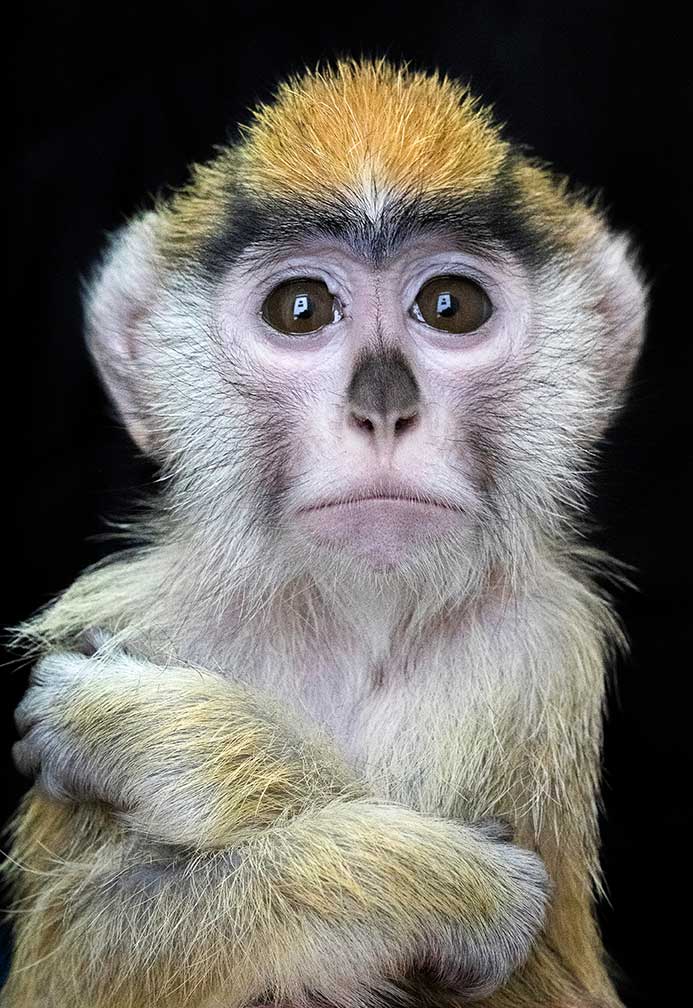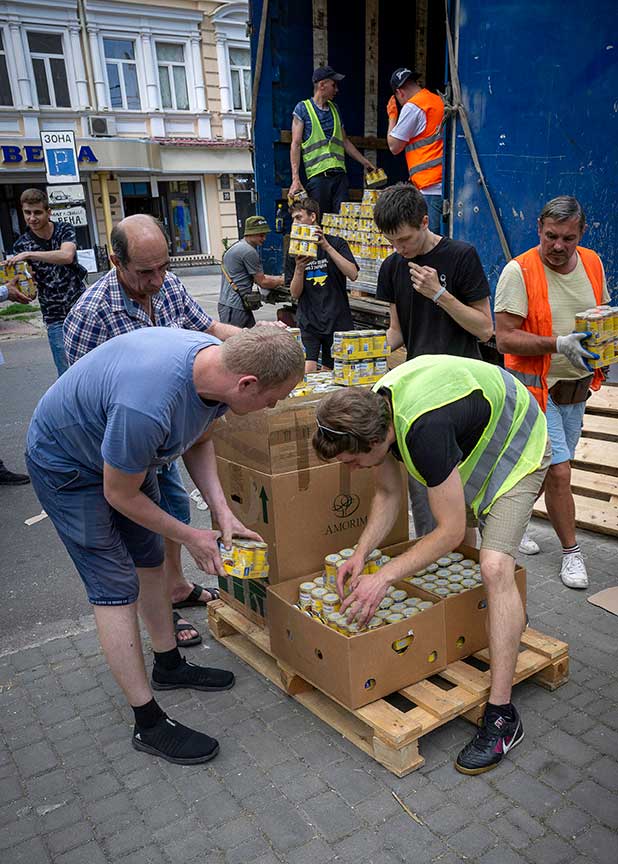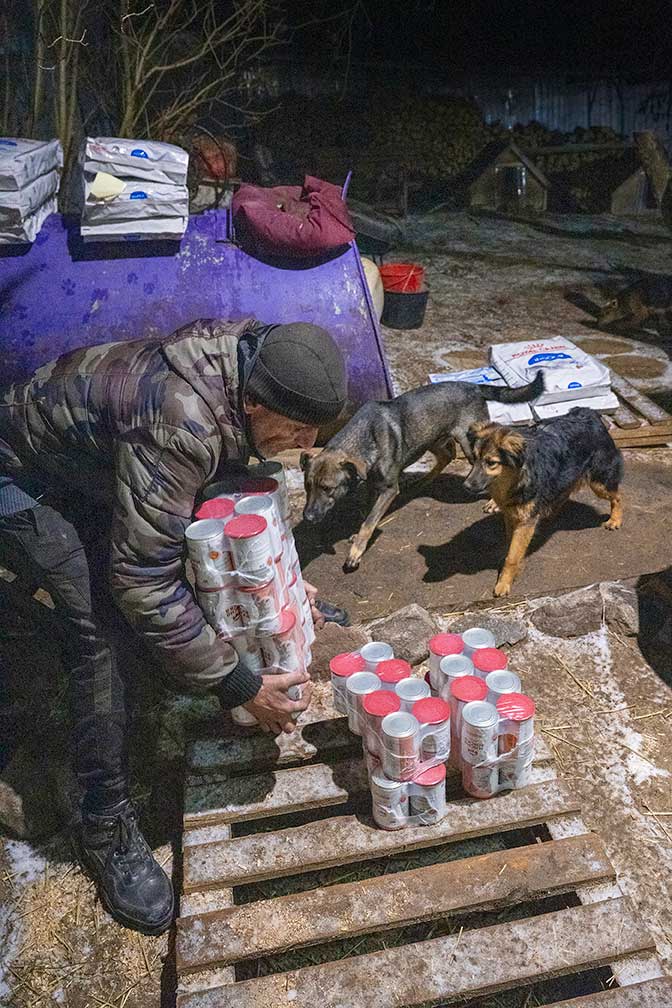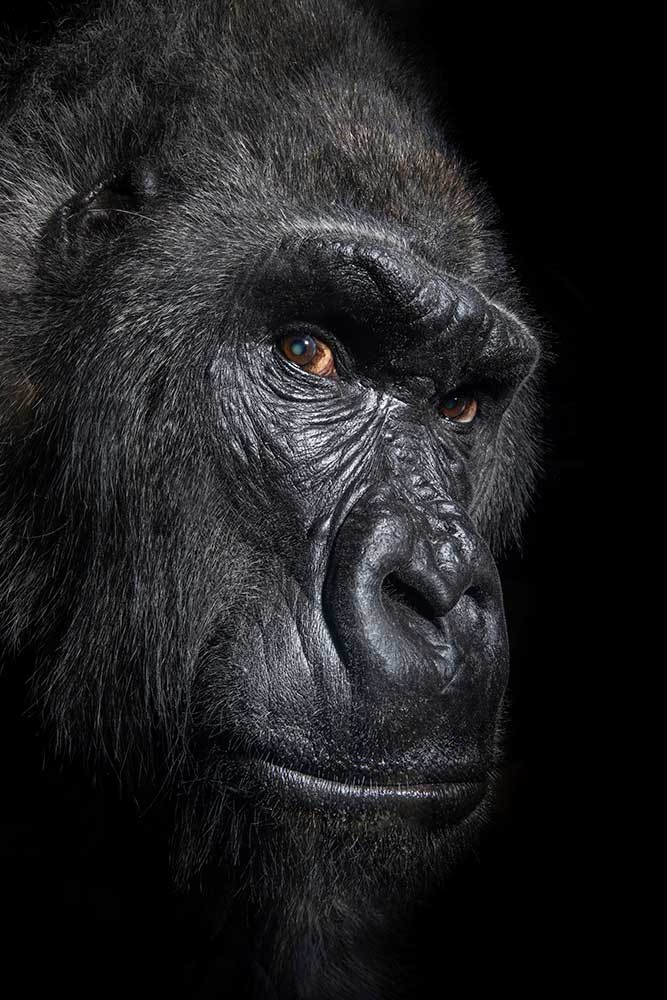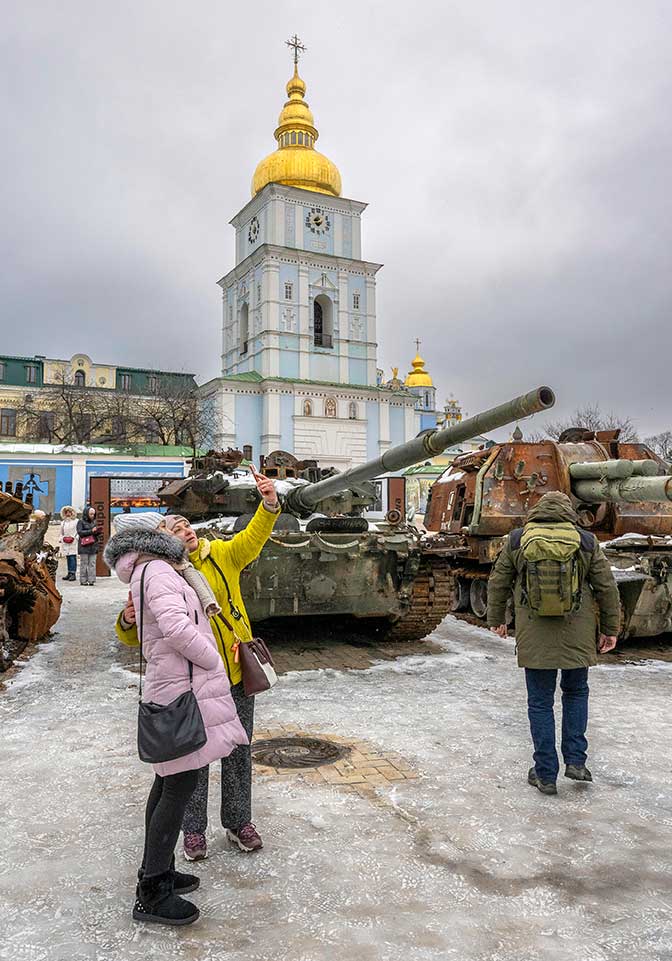War on the Innocents
By Mark Edward Harris, Zuma Press

Mark Edward Harris, Zuma Press © All rights reserved.
“Whether I’m working in North Korea, Iran, Iraq, or other countries in the international spotlight, my focus tends to be the same: people going about their daily lives as best they can. Yet, at the same time,
I use my camera to photograph animals that face human-caused issues, such as palm oil plantation incursions into the forests of Borneo and moving orangutans to the edge of extinction in the wild.
Animals becoming the victims of human conflict is also nothing new. Photos of dead horses strewn across countless 19th-century and early 20th-century battlefields can attest to this sad reality.
In Ukraine, there’s been a migration from east to west, not only of people but every size and shape of fauna. Some are pets brought out by their fleeing owners. Others are abandoned pets or strays gathered by staff and volunteers from NGOs, including UAnimals (An animal rights organization in Ukraine), who go into frontline areas to rescue those who might otherwise not survive. At the same time, a Noah’s Ark of zoo animals continues to be transferred to safer sanctuaries as part of this Western movement.
Not all of these efforts have been in time.
“At the beginning of the war, the Feldman Ecopark housed six orangutans and 12 chimpanzees. On March 17, 2022, the winter enclosures for the great apes were destroyed by mortar shelling, killing two orangutans and a chimpanzee.“
The Feldman Ecopark outside of Kharkiv suffered the greatest carnage. Shelling and bombing of the Ecopark started at the beginning of the Russian invasion of Ukraine. On February 24, 2022, the entrance and several enclosures were damaged, with some animals being killed. Daily shelling continued, and on March 7, 2022, Russian troops killed two Ecopark employees and then hid their bodies, which were not discovered until a month later. They had stayed behind to feed the animals. At the beginning of the war, the Feldman Ecopark housed six orangutans and 12 chimpanzees.
On March 17, 2022, the winter enclosures for the great apes were destroyed by mortar shelling, killing two orangutans and a chimpanzee. The surviving orangutans and chimpanzees were evacuated under fire by Ecopark employees and volunteers. Most were relocated to the Kharkiv Zoo, which is located in a comparatively safe area of the city. While the grounds are back under Ukrainian control, the EcoPark is still strewn with unexploded ordnance.
“Horace, an Asian elephant at the zoo, was so terrified of explosions that he had to be put on sedatives. During the warmer days when he could be outside, he quickly learned to go back into his enclosure as soon as he heard the air raid siren sound.”
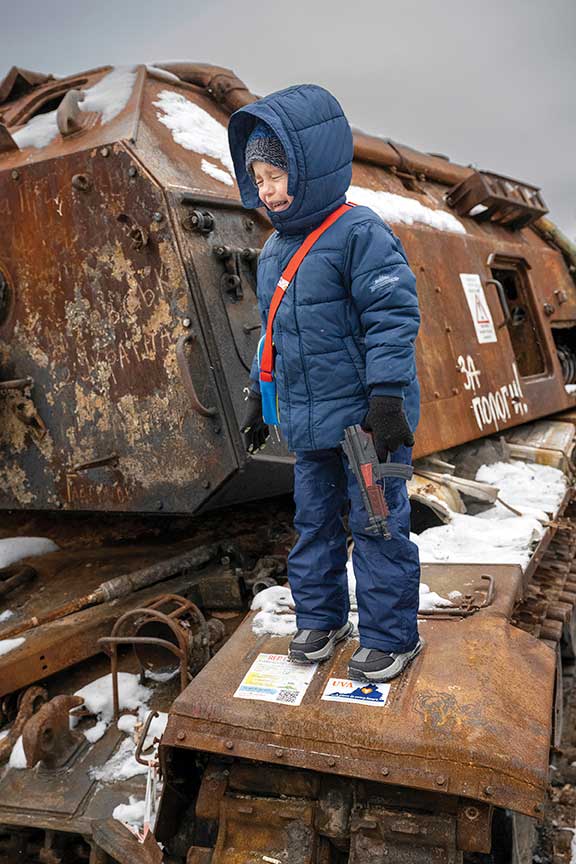
A young boy with a plastic gun stands on a destroyed Russian armored vehicle on display in Kyiv.
Mark Edward Harris, Zuma Press © All rights reserved.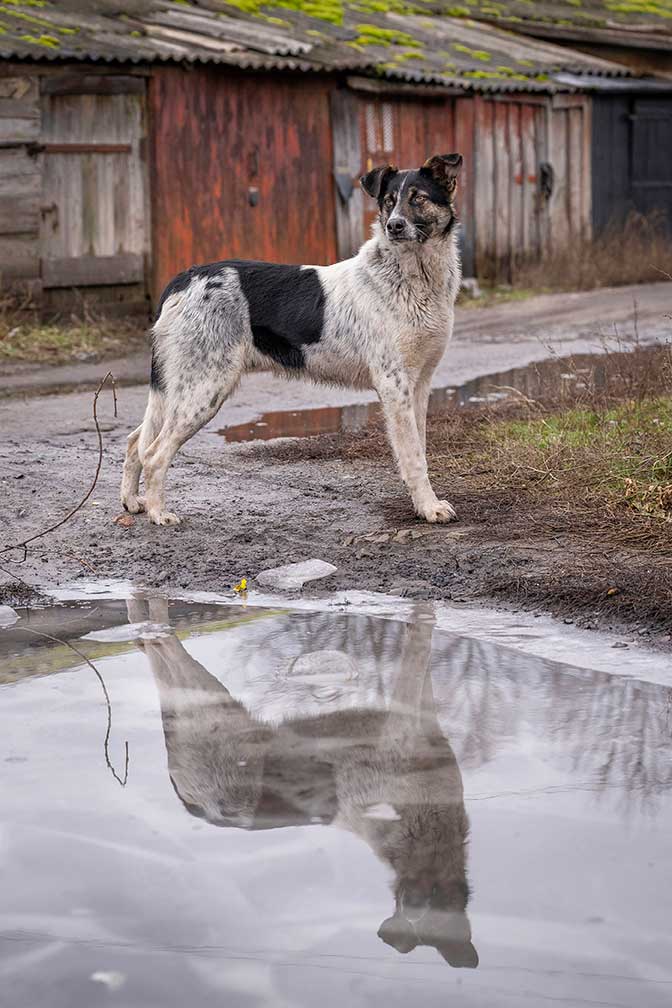
A stray dog reacts to the sound of an explosion in Vovchansk, Ukraine, two kilometers from the Russian border.
Mark Edward Harris, Zuma Press © All rights reserved.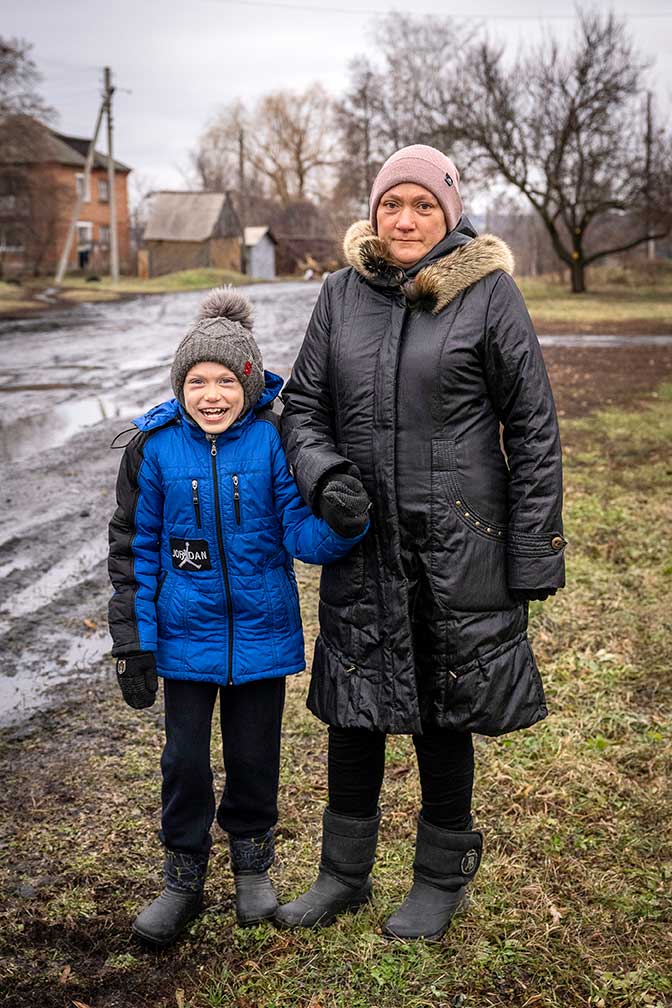
A mother and son are out for a walk in Vovchansk on a day of constant incoming artillery fire.
Mark Edward Harris, Zuma Press © All rights reserved.
Another private animal sanctuary, the XII Months Zoo in Demydiv village outside of Kyiv, also came under Russian control until the Ukrainian military liberated the area. Feeding the animals and keeping them warm with the frequent power outages during the frigid Ukrainian winter has been the biggest of many issues. While a Far Eastern tiger and some other animals can thrive in cold climates, others have died or will die without the power to keep their enclosures heated.
At the Kyiv Zoo, a wood-burning stove with a ventilating system has been installed to keep 48-year-old Tony the Gorilla alive. He has shown relatively little effect from the war, while others have displayed significant signs of stress due to the sounds of war. Horace, an Asian elephant at the zoo, was so terrified of explosions that he had to be put on sedatives. During the warmer days when he could be outside, he quickly learned to go back into his enclosure as soon as he heard the air raid siren sound. A staff member moved into the 17-year-old elephant’s enclosure to comfort him after any loud bangs. When Horace is in distress, animal keepers feed him apples and talk to him until they sense he’s relaxed.
On the outskirts of Kyiv is the White Rock Bear Center, where several bears and a wolf are now housed. Among them is Chada, a Tien Shan (Himalayan) bear, an endangered subspecies of brown bears with only three hundred of them left in the wild. Chada spent seven years in a small rusty cage after she was no longer needed by the National Circus of Ukraine.
Animal activists were able to move her into a temporary private menagerie until 2019, when she was moved into a large fenced-in open space with access to a cage and a den at the Bear Center.
She often plays along a shared fence with an arctic wolf named Javelina, who is housed in the adjoining indoor/outdoor space.
The wolf was evacuated from a menagerie where she lived in a tiny cage on a concrete floor in the embattled Donetsk oblast.
Next to the White Rock Bear Center is the Wild Animals Rescue Center, where two lionesses and a tiger from the Donetsk oblast are housed.
They were saved from
a private zoo where they had been kept in a small space for breeding and selling. They will be kept at the rescue center until they can be evacuated to a new facility outside of Ukraine with proper conditions and without war.
My tools for this project were the Nikon Z9 with Z 14-24mm f/2.8, Z 24-70mm f/2.8, and 70-200mm lenses, a Stella CL 2000 light, and a Profoto strobe in a Think Tank Airport TakeOff Rolling Backpack. When working in Vovchansk, two kilometers from Ukraine’s border with Russia, I added body armor to the equipment list since the city was under constant artillery attack.
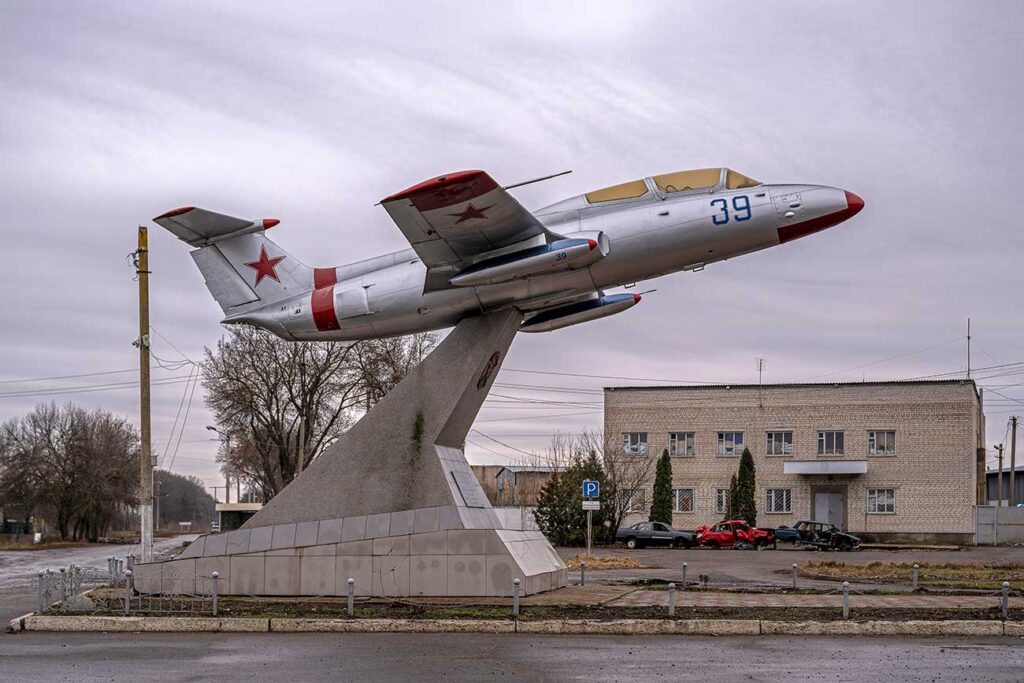
Mark Edward Harris, Zuma Press © All rights reserved.
Regardless of the type of animals they are, none respond well to sudden loud noises or changes in their routine. While animals do fight amongst themselves, war, a concept they cannot comprehend, creates anxiety, stress, and fear, emotions that are not exclusive to humans.
Mark Edward Harris
Assignments have taken Los Angeles and Tokyo-based photographer Mark Edward Harris to more than 100 countries and all seven continents. His editorial work has appeared in publications such as Vanity Fair, LIFE, The New York Times, The Washington Post, Time Magazine, GEO, Newsweek, Conde Nast Traveler, National Geographic Traveler, AFAR, Wallpaper, Vogue, Architectural Digest, The Los Angeles Times Magazine, and The London Sunday Times Travel Magazine as well as all the major photography and in-flight magazines. Among his numerous accolades are CLIO, ACE, Impact DOCS Award of Excellence, Aurora Gold, and IPA awards. His books include Faces of the Twentieth Century: Master Photographers and Their Work, The Way of the Japanese Bath, Wanderlust, North Korea, South Korea, Inside Iran, The Travel Photo Essay: Describing
A Journey Through Images, and his latest, The People of the Forest, a book about orangutans.


